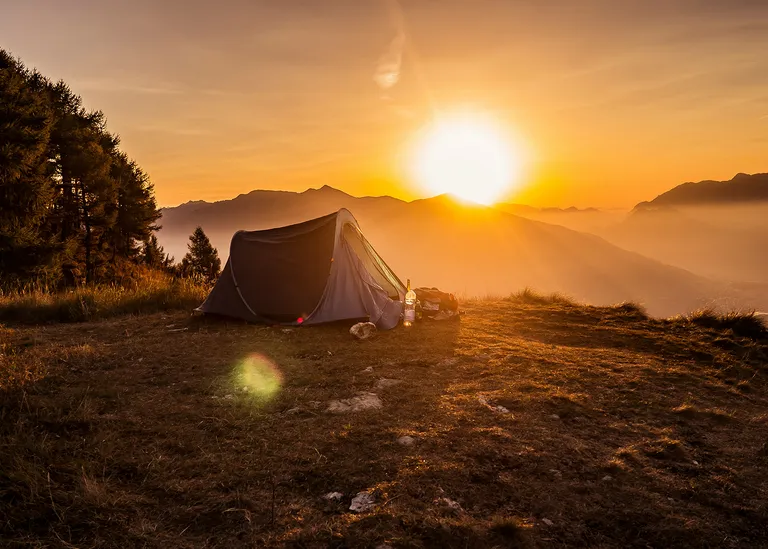If you’ve spent more than five minutes scrolling Facebook Marketplace lately, you would have seen the chopped Nissan Patrols with “easy fix” engine issues, 80 Series Land Cruiser’s with more rust than rego, dreamers asking twenty-five grand for something that looks like it’s done two laps of the Canning on three cylinders, and blokes who reckon “not rego’d but should pass no worries” is a convincing sales pitch.
And yet, here you are. Dead keen to get your hands on a used 4X4. Maybe you’re new to wheeling and not quite ready to fork out for a brand-new rig, or perhaps, you just want something you can make memories in, beach runs with the family, weekenders in the bush, or finally getting to the sort of campsites that don’t come with boom gates and a check-in counter.
Whatever the reason, it’s a smart move, if you know what you’re doing. Done right, you’ll end up with a solid rig that’ll carry you and your gear into the bush and back again. Done wrong, and you’ll be $20K deep into someone else’s unfinished project, wondering why the diffs scream, the snorkel sucks air from the glove box, and the dog won’t stop barking at it.
Fair warning: this isn’t a guide on ‘how to score a bargain’, this is a guide on how to avoid buying a used lemon 4X4 that’s done more water crossings than the Spirit of Tasmania.
Check Underneath
If you want to see how the 4X4 you’re looking at has lived, you need to get under it, and I don’t mean just having a quick glance underneath, I mean getting on the ground with a torch and honing your inner archaeologist.
If the inside of the chassis rails are full of dried mud, that’s a pretty good clue it’s spent time up to its guts in water... and hasn’t been cleaned out since. That muck traps moisture and slowly eats the steel from the inside, you don’t need to be an engineer to know that your chassis is the last place you want rust.
While you're down there, keep an eye out for big dents in the rails and bash plates. Wear and tear is normal, no one expects showroom condition on a touring rig, but if it looks like it’s tried to mate with a boulder at full speed, that’s not just “a bit of character.” That’s warning signs of a hard life and possibly bent bones.
If the underside has been freshly painted or drowned in black underbody coating? Yeah, sometimes that’s just a tidy-up. Other times, it’s a cover-up. Either way, it’s worth asking the question. Finally, look for wet patches around the underside of the motor and around key components such as the gearbox, transfer case and diffs which will be a tell tale sign of leaks.
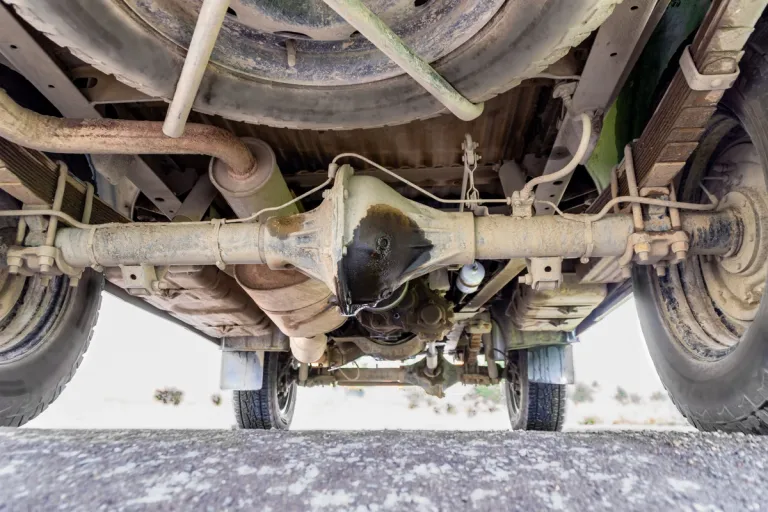
oil leak from rear axle 4wd underbody check
Pop the Bonnet
Once you’ve crawled out from underneath, pop the bonnet and take a proper look. Don’t just check if there’s an engine in there and call it a day, give it a once-over with as much attention to detail as you’d have if you were checking what beers the pub has on tap.
Start with the basics. Look at the oil, if it’s milky, creamy, or weirdly frothy, walk away. That’s coolant mixing with oil, which usually means a cracked head or a blown gasket. Same goes for the radiator or overflow bottle — if it smells like exhaust fumes, looks like a milkshake or the cooling system is over-pressurising that engine’s likely been cooked.
Next, eyeball the wiring. Some 4WD owners know their way around a soldering iron, others don’t. If it looks like the 12V has been done with a mix of twist and tape-techniques and scotch-locks you’re most likely in for a world of electrical gremlins the first time you hit a corrugation.
Pay close attention to accessories like snorkels. A lot of people fit them for the look, not realising a badly sealed snorkel is basically a water funnel into the engine. If it’s covered in silicone blobs, crooked, or doesn’t line up with the airbox properly, it could’ve already done its damage.
And don’t forget to ask about the timing belt. If the seller gives you a blank stare or says “Yeah, the bloke before me did it,” you might want to budget for a new one just in case.
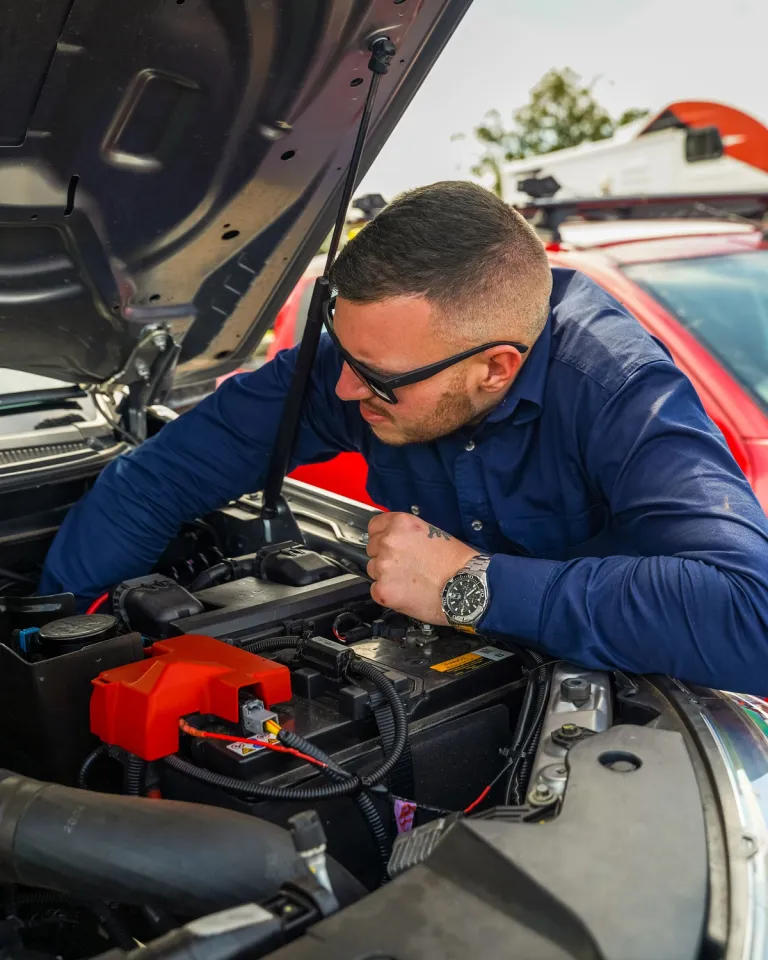
under bonnet inspection
Take a Seat
The interior’s where you’ll start spotting the little things that reveal how a 4X4 has been treated.
If there’s red dust in the air vents or tucked deep into the carpet, chances are the 4WD you’re looking at has done as many Outback KM’s as the RFDS. Dust like that doesn’t just sneak in from a gravel driveway, it’s the kind that clings on after days in the desert, and it doesn’t let go (ask me how I know).
Check the condition of the seats, the pedals, and the steering wheel. If it’s a “low kilometre” car with a steering wheel that looks like it’s been gnawed on by a dingo, something doesn’t add up. Same goes if the carpet is damp, mouldy, or you spot signs of dodgy wiring under the dash. A neat interior might mean a careful owner. A rough one might mean this rig’s seen more abuse than a drop toilet.
While you’re there take a look at the log book and ensure it’s got a solid service history. Also, flick every switch. Lights, winch control, air con, electric windows, even the dodgy-looking eBay-special compressor switch jammed under the dash. If it’s there, it should work. If it doesn’t, what else doesn’t?
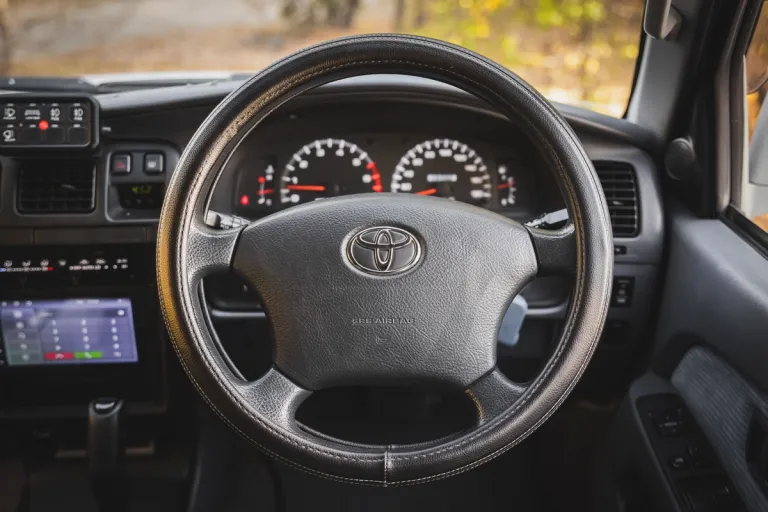
toyota hilux interior steering wheel
Take it for a Spin
This is where things either get exciting or scary. If the seller reckons it “hasn’t been started in a while” or makes excuses about not being able to test drive it, just smile, nod, and don’t waste another minute. A good rig speaks for itself the second it fires up.
This step is important. With yourself or someone else looking at the exhaust, start it cold and look for any puffs of smoke, in reality there should be none. If there is smoke, the colour and amount of it will start to tell you a story. It’s also when you’ll start to notice any lazy injectors, buggered glow plugs, or bearings that sound like someone shaking a toolbox full of bolts. Watch the dash, any lights that stay on after startup (like ABS or traction control) could mean issues.
Once you’re moving, feel for sloppy steering, brakes as vague as a teenager, or a gearbox that crunches like cornflakes. Once up to operating temperature, give it some beans, back off, and see if there’s any hesitation, clunks, or odd noises.
And don’t forget to test the 4WD system. That means locking the hubs (if it’s got them), selecting low range, and making sure everything engages properly. If the seller says “I haven’t used that in ages,” take that as gospel, and assume it might not work at all.
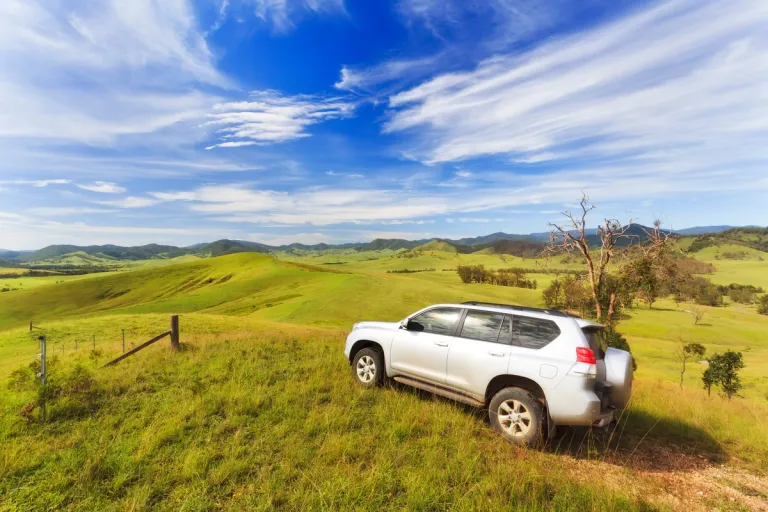
toyota prado buying second hand driving test
Dodgy Dealers, Scams and When to Walk
Now, look, most sellers are decent enough. But there are some absolute artists out there trying to flog off rigs with more lies than a fishing story.
If the seller’s cagey, vague, or reckons they don’t have time for you to check it properly, walk away. If they “don’t have the rego papers right now” or say it’s registered in their mates name, that’s a red flag flapping in a cyclone.
Cross-check the VIN (usually stamped on the bottom right of the windscreen) and engine number against the rego papers and make sure they match what’s on the actual car. You’d be amazed how many dodgy backyard sales fall over right there. And for the love of sanity, run a REVS or PPSR check. That’ll tell you if the car’s stolen, written off, or still under finance. Nothing like buying a clean-looking Cruiser only to find out it still technically belongs to Westpac.
Scams are getting slicker, too. If the price is too good to be true, the seller is “overseas but can ship the car,” or they push you to pay before you’ve even sniffed the seat, it’s a scam. Every time. Also, don’t actually sniff the seat.
The Nitty Gritty
Alright, so you’ve found the one. It’s clean, drives well, sounds healthy, and doesn’t reek of lies or river crossings, congratulations. But before you start dreaming about red dirt and cold beers at camp, there’s one last bit of admin: the paperwork.
You’ll need:
- A signed transfer of ownership form (varies by state)
- A roadworthy certificate (again, depends on your state — some require it, some don’t for private sales)
- Rego papers with matching VIN, engine number, and address
- ID from the seller, and ideally, make sure the name matches the paperwork
If you’re transferring rego interstate or buying unregistered, make sure you’ve got a temporary permit sorted to drive it home. Otherwise, you could be in for a fine before you even get the chance to air down the tyres.

buying a mazda bt-50 second hand
The Used 4X4 Buyers Checklist
Here’s your last stop before signing anything and handing over your hard-earned. Run through this, and you’ll be giving yourself the best chance at landing a decent rig.
Checklist:
- Looked underneath: no excess rust, no mud-filled chassis, no obvious damage
- Checked the engine bay: clean(ish), no milky fluids, no sketchy snorkel installs
- Interior tidy: no weird smells, no red flags in the dash or wiring
- Test drive done: cold start, no odd noises, 4WD works properly
- Verified rego, VIN, engine number, and PPSR status and vehicle history report
- Reviewed receipts, service history, and roadworthy (if required)
- Seller is legit, honest, and not pushing you to rush the deal
A solid second-hand 4X4 will take you to places most people only ever dream of and with the right checks, it won’t leave you stranded halfway up a track with a detonated diff and an empty wallet.
Take your time. Trust your gut. And remember, if it looks like it’s done the Simmo more times than the school run… it probably has. If you don’t reckon you have the technological know-how, organise a pre-purchase inspection performed by a trusted mechanic.
And when it's time for insurance
Club 4X4 offers comprehensive cover for 4WDs, caravans and camper trailers.


